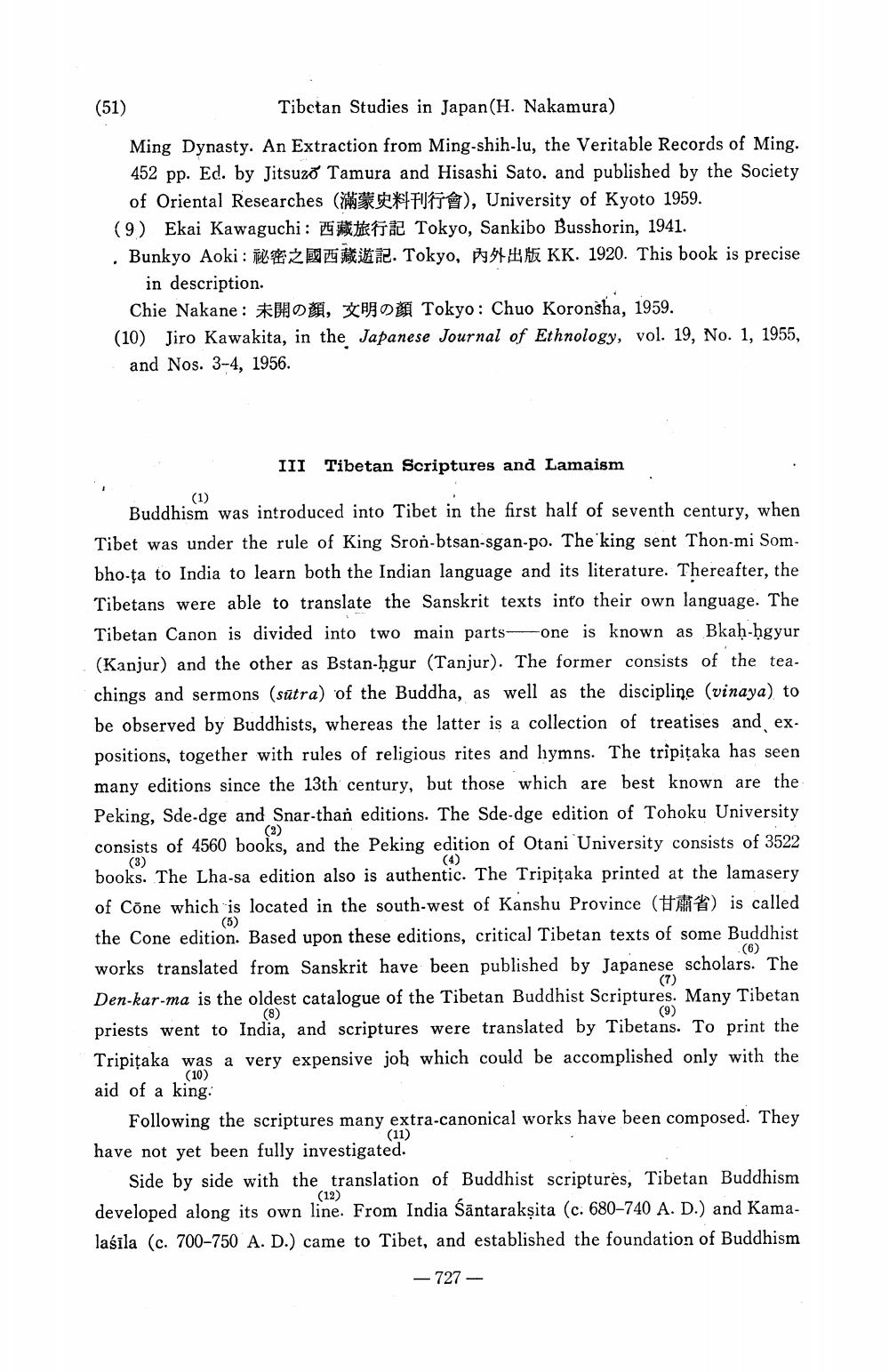Book Title: Tibetan Studies In Jjapan Author(s): Hajime Nakamura Publisher: Hajime Nakamura View full book textPage 6
________________ (51) Tibetan Studies in Japan (H. Nakamura) Ming Dynasty. An Extraction from Ming-shih-lu, the Veritable Records of Ming. 452 pp. Ed. by Jitsuzo Tamura and Hisashi Sato, and published by the Society of Oriental Researches ***ITUITO), University of Kyoto 1959. (9) Ekai Kawaguchi: TTHC Tokyo, Sankibo Busshorin, 1941. . Bunkyo Aoki: 20 HZ. Tokyo, P K K. 1920. This book is precise in description. Chie Nakane : *! , *HD1 Tokyo: Chuo Koronsha, 1959. (10) Jiro Kawakita, in the Japanese Journal of Ethnology, vol. 19, No. 1, 1955, and Nos. 3-4, 1956. III Tibetan Scriptures and Lamaism (1) (3) Buddhism was introduced into Tibet in the first half of seventh century, when Tibet was under the rule of King Sron-btsan-sgan-po. The king sent Thon-mi Sombho-ta to India to learn both the Indian language and its literature. Thereafter, the Tibetans were able to translate the Sanskrit texts into their own language. The Tibetan Canon is divided into two main parts- one is known as Bkah-hgyur (Kanjur) and the other as Bstan-hgur (Tanjur). The former consists of the tea. chings and sermons (sūtra) of the Buddha, as well as the discipline (vinaya) to be observed by Buddhists, whereas the latter is a collection of treatises and expositions, together with rules of religious rites and hymns. The tripitaka has seen many editions since the 13th century, but those which are best known are the Peking, Sde-dge and Snar-than editions. The Sde-dge edition of Tohoku University consists of 4560 books, and the Peking edition of Otani University consists of 3522 books. The Lha-sa edition also is authentic. The Tripitaka printed at the lamasery of Cõne which is located in the south-west of Kanshu Province (AW) is called the Cone edition. Based upon these editions, critical Tibetan texts of some Buddhist works translated from Sanskrit have been published by Japanese scholars. The Den-kar-ma is the oldest catalogue of the Tibetan Buddhist Scriptures. Many Tibetan priests went to India, and scriptures were translated by Tibetans. To print the Tripitaka was a very expensive job which could be accomplished only with the aid of a king: Following the scriptures many extra-canonical works have been composed. They have not yet been fully investigated. Side by side with the translation of Buddhist scriptures, Tibetan Buddhism developed along its own line. From India śāntarakṣita (c. 680-740 A. D.) and Kamalasila (c. 700-750 A. D.) came to Tibet, and established the foundation of Buddhism (5) (6) (8) (10) (11) (12) - 727 -Page Navigation
1 ... 4 5 6 7 8 9 10 11 12
